CES 2016: Deepcool’s Genome is a Water Cooling Equipped Case with a Helix Reservoir
by Ian Cutress on January 13, 2016 1:00 PM EST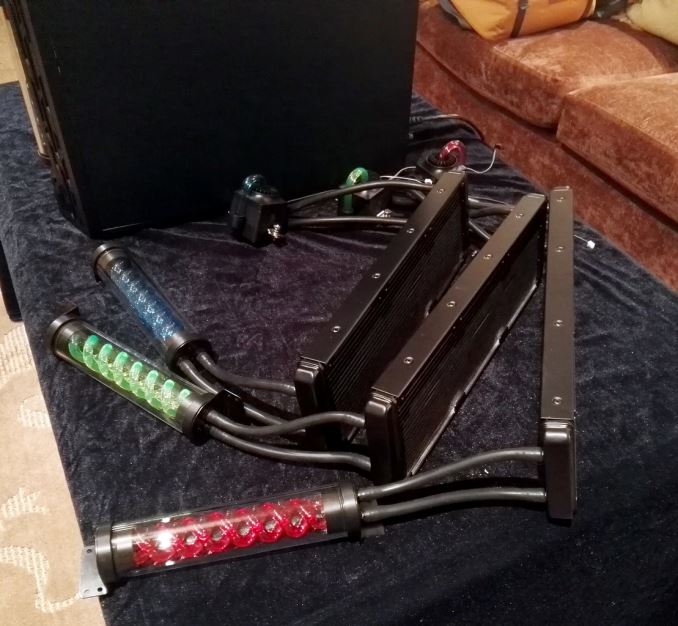
We’ve dealt with closed loop liquid coolers for computer processors for the best part of five years now, and there are users different sides of the fence regarding their utility, ease-of-use or performance. There are chassis being designed with these CLLCs in mind, such that users have enough space to cool multiple CPUs or GPUs with plenty of mounting points. Deepcool, via their brand Gamer Storm, had a case on display designed to fit their specific cooler which aims more towards the aesthetic of the boring black CLLCs we have had up to this point.
The cooler has an additional stage compared to other CLLCs, with a combination waterblock/pump, a triple 120mm radiator and then a helix shaped reservoir. The whole arrangement is designed to fit only in the Genome chassis, with the helix proudly on display on the outside, and the top of the chassis designed to accommodate the radiator.
For example here we have the white Genome chassis with a limited edition ASUS Z97 Mark S motherboard (read our review here) and white Avexir DRAM specifically built for the motherboard. I pointed out to Deepcool that here the CPU block and pipes should be white as well, to which they produced a model with that in mind but it wasn’t ready to be installed. The CPU block/pump has a design which splits them into semi-modular parts that allows Deepcool’s design team to avoid patent issues and produce new models in the future which can be an upgrade of one or the other.
I was told by Deepcool that the block has a variety of mounting mechanisms for all the major sockets, but they are currently working on an updated version to make it easier.
The chassis itself is an ATX case with a special area at the front of the case to give more room for cable routing but also for airflow. There is a bracket that can be removed for super long GPUs, and due to the design SSDs and HDDs are mounted at the bottom with the power supply.
I tell you what, the design is simple and effective. I have seen this sort of helix reservoir before so Deepcool is not unique in this, but the cooler and chassis is designed to be sold as a set in various color combinations yet to be decided. The price at retail for both should be around the $250 mark, which really puts $150-$180 in the triple-radiator cooler (with fans) and $70-$100 in the case.


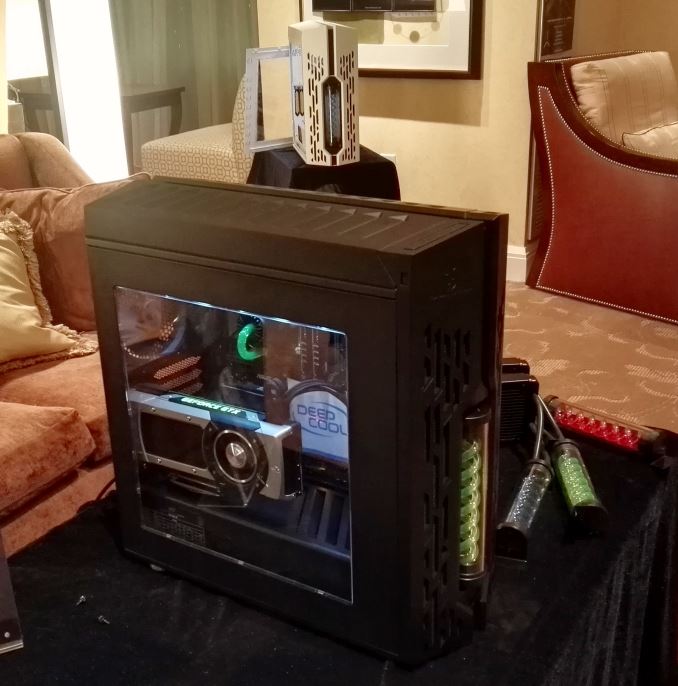
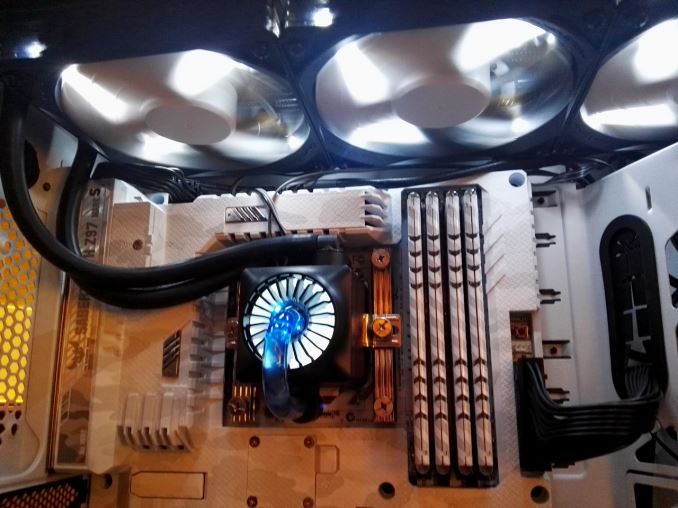
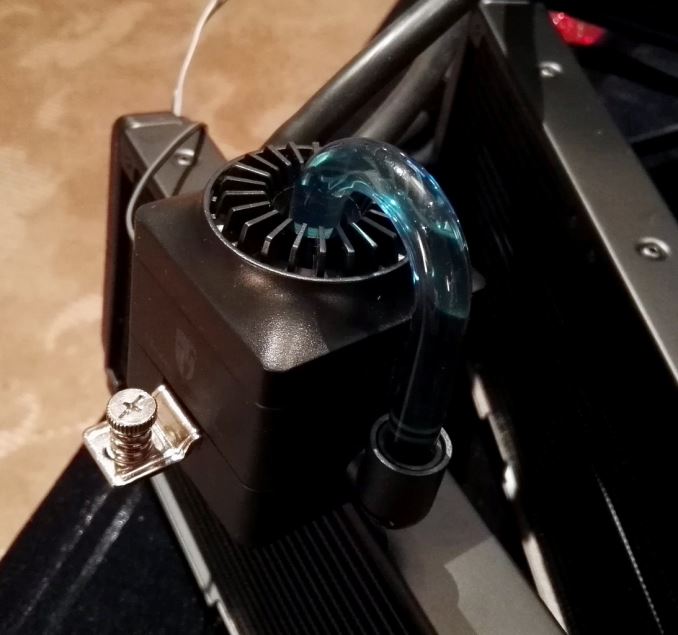
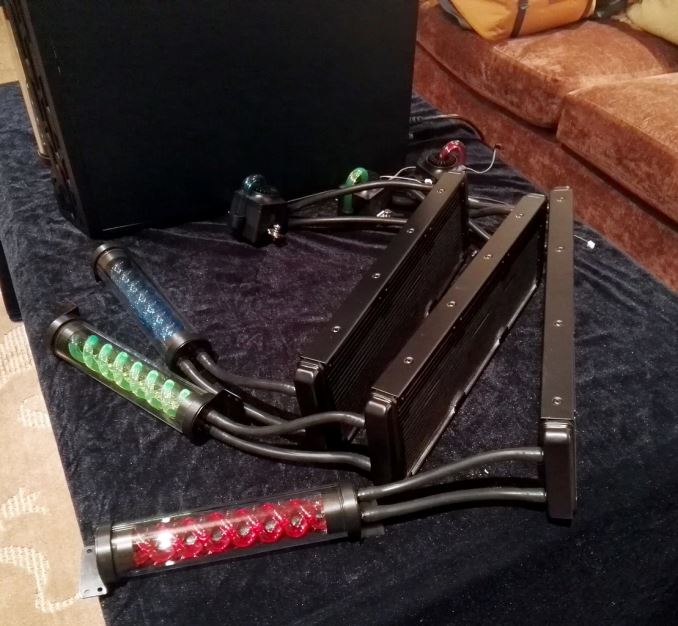















11 Comments
View All Comments
imaheadcase - Wednesday, January 13, 2016 - link
I wish they would come up with a standard to make the motherboard require less connections as a whole. That itself would streamline computers installations and just make cleaner all around.Why don't they "upgrade" the motherboard like old days and let all GPU cards get power from motherboard? Is it a technical issue, or just a standards issue?
Why do all the USB connections have to be at bottom of boards, always obscured by GPUs? For that matter, why have all the sata ports/usb ports on a board...can't we make it so one port each can power lots of devices for you...
It seems power is taking a backseat in design than moving forward.
extide - Wednesday, January 13, 2016 - link
Because it is impractical to supply 300+ W of power through the little pins in the PCIe connector. You would have to pump it up to like 48v to make it practical, otherwise you would literally melt/burn up the connector from the current. Supplying the power via extra connectors is just a much better idea.DanNeely - Wednesday, January 13, 2016 - link
Do the have that nvidia card on a PCIe extension cable to line it up with the windows blowhole; or did someone in marketing just think slapping a card on the side like that looked cool?ISGoodwin - Wednesday, January 13, 2016 - link
I agree that the GPU orientation in the case needs to be shared as it is a key difference.To me, it looks like the case has a PCIx16 slot in the bottom and a double slot opening at the back, you can see the white case in the background on the second picture. How that is connected to the PCI slot on the motherboard is a mystery.
As for the side pannel, I don't think it has a hole, there isn't one on the white and I think it only appears there due to the fan on the card on the black case.
ISGoodwin - Wednesday, January 13, 2016 - link
From other sources: Extra slots for vertical GPU installation (PCI-E extension cable is not included)extide - Wednesday, January 13, 2016 - link
I think it's on an extender and setup weird like that just for CES, that's not how it would actually be.Mr Perfect - Wednesday, January 13, 2016 - link
In the last picture the window appears to be solid with no vents, so it's probably just to look cool. Not really surprising in a case whose entire purpose is to look cool.DanNeely - Wednesday, January 13, 2016 - link
The second picture, the one with the GPU attached to the window has a marking of some sort on the window the looks a lot like a hole centered on the fan. The white case with no window appears to be a different model, not just a different color. Its top and front panels are triangular with a groove down the center instead of flat.HollyDOL - Thursday, January 14, 2016 - link
from my experience with water cooling, if that bluish hose thing coming from cpu cooler block is a hose (and it looks like that), it will flatten after a while due to way too tight curving.speely - Thursday, January 14, 2016 - link
It's hardline. I'm not sure whether it's PETG or acrylic, but it's definitely hardline.The waterblock/pump is actually a lot like the Asetek design on other, more common CLC's (like the Corsair series), except the pump is flipped over. Instead of pushing the water down and through the block fins, Deepcool pumps the water *up*, through that tube, then down to the bottom section, where (as far as I can tell) it pushes the water through the fins and out the other side, on its way to the radiator. (What I don't know is whether it just pumps the water from one side of the block to the other, laterally (which would probably be simpler and cheaper) or whether they pump it through a plate on top of the fins and down, like the way EK's GPU waterblocks tend to be.)